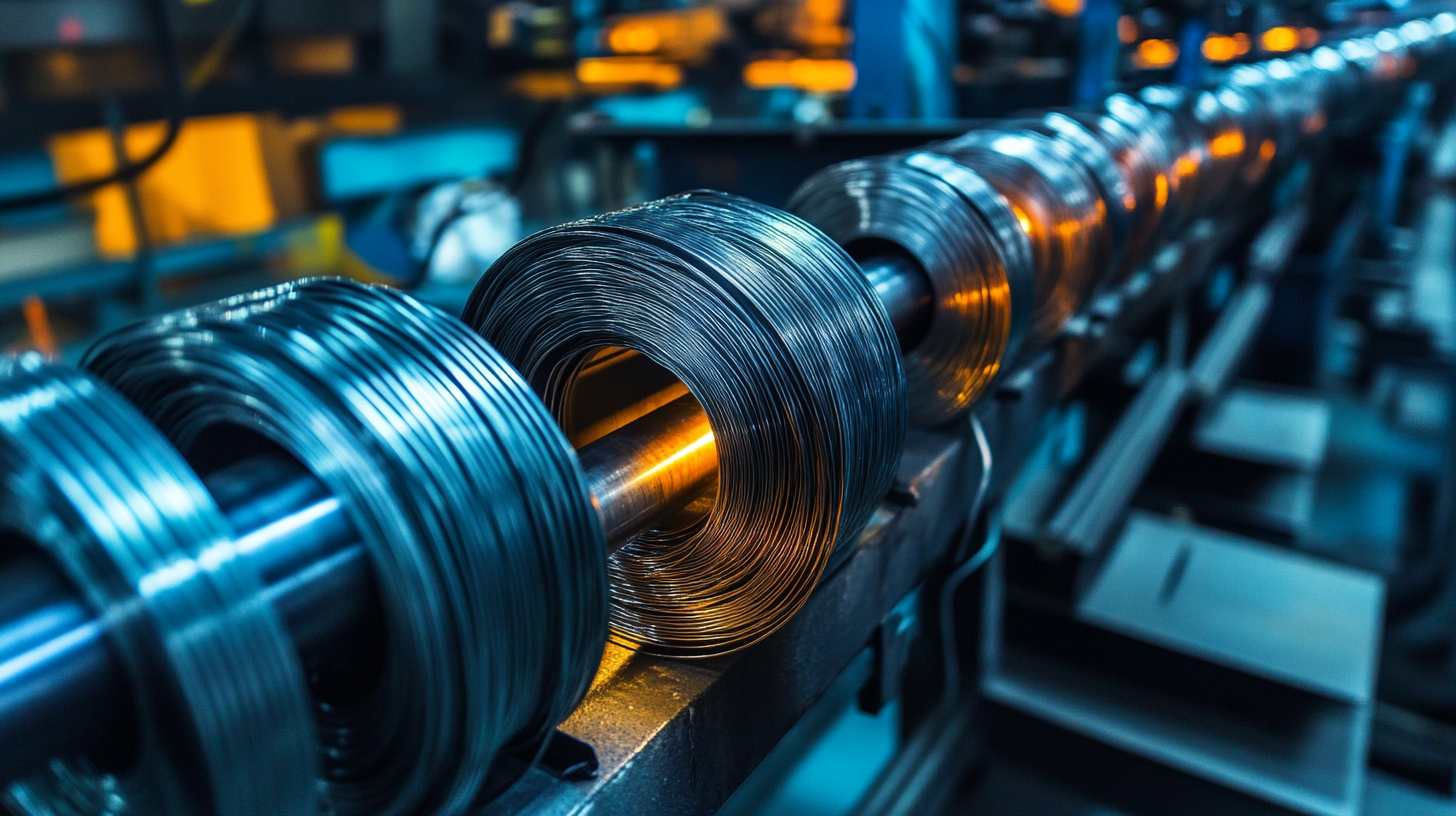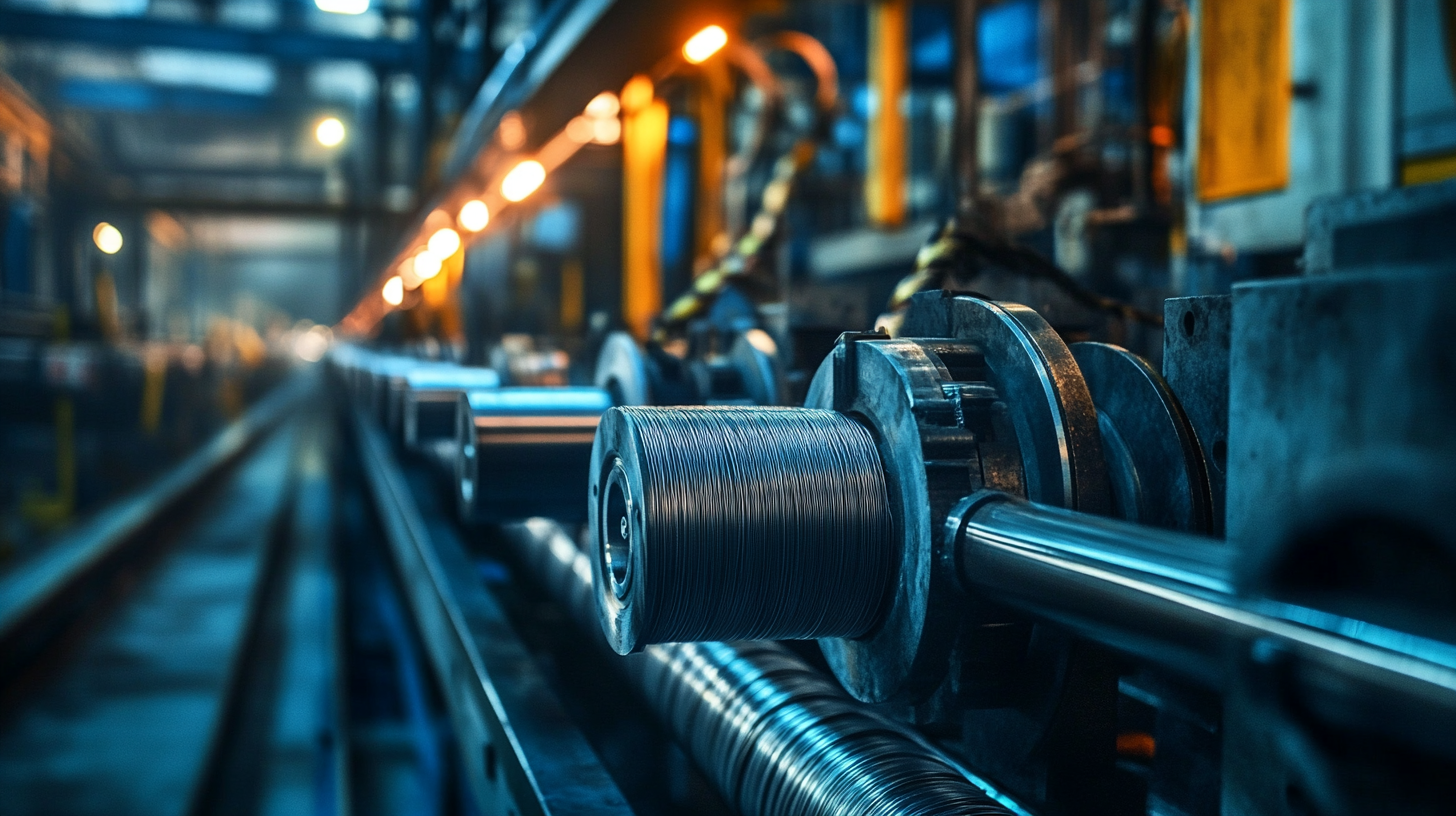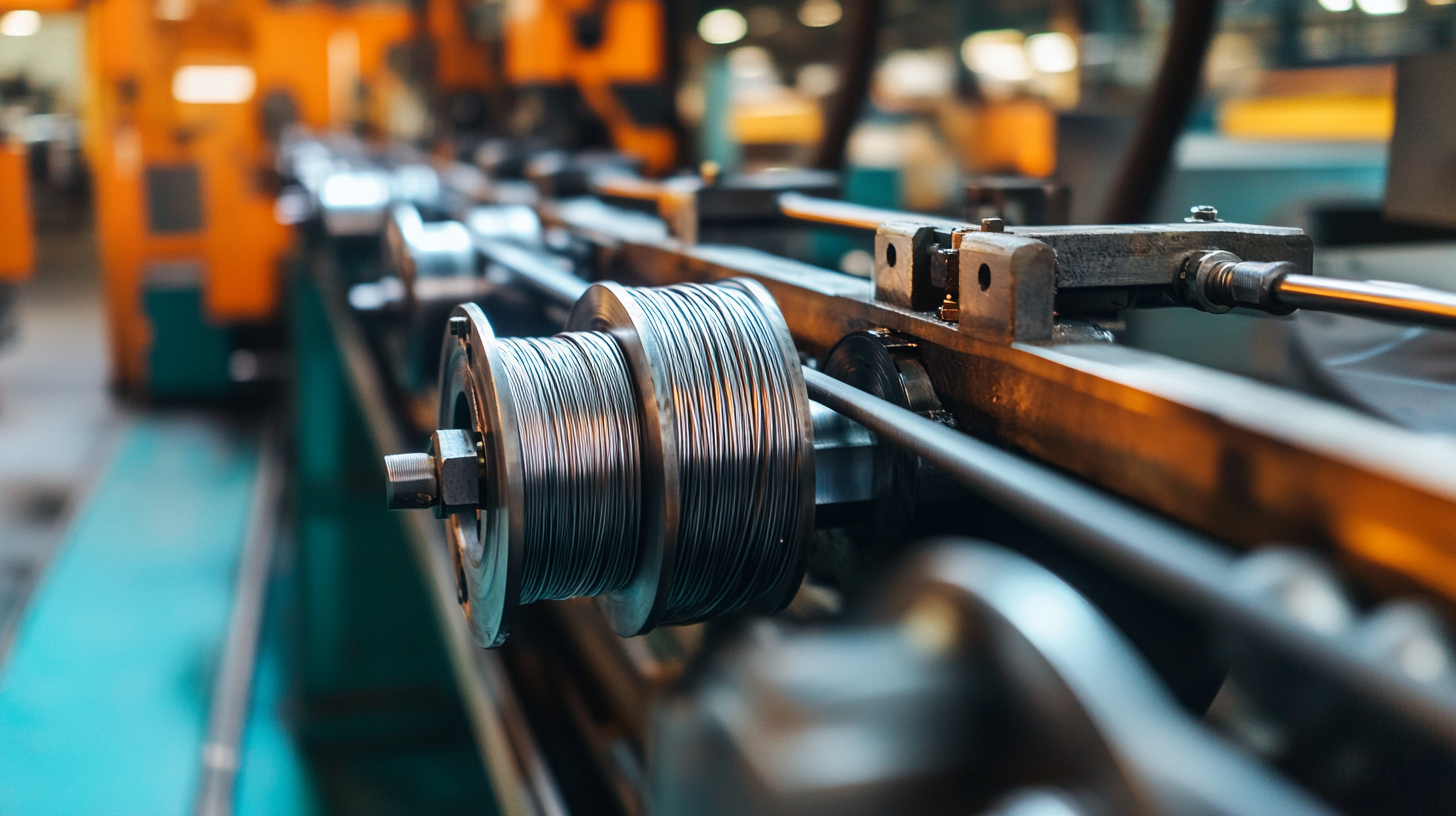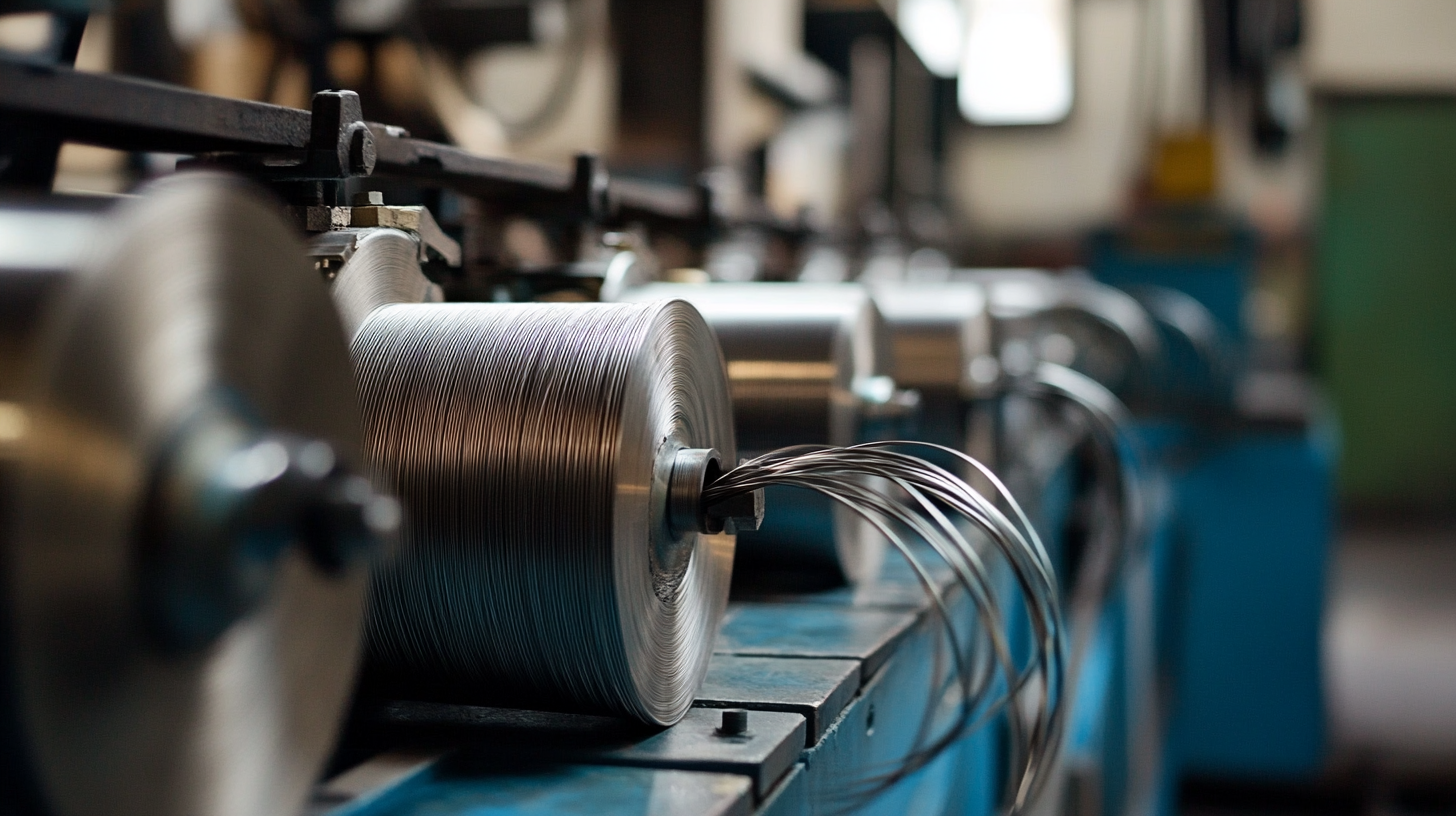When analyzing the production process in manufacturing industries, it's important to look into factors that enhance the performance efficiency of wire drawing machines. Improved performance is an immediate concern for industries as they work to increase their efficiency. To achieve this, understanding wire drawing machine functions with respect to the materials used or the technology made use of in these wire drawing machines becomes relevant. For example, all the necessary components would contribute to the overall effectiveness of these machines. More importantly, through these factors, manufacturers can have an effective way to purpose their decisions toward productivity improvement and cost cut.
Through this article, we would identify 7 areas to focus on in efficiency improvements for wire drawing machines. Machine design, drawing parameters, lubrication systems, and maintenance practices will be key among items discussed in what promises to be a very useful overview encouraging improvements to wire drawing processes. If you're in the manufacture of metal wires or just want to glean new ways to improve operational efficiencies, this discussion will provide all insightful pointers to take your wire drawing machine performance a notch higher.

Drawing wires requires considerable energy; thus, the efficiency of wire drawing machines is heavily dependent on the material property being processed. Such properties as tensile strength, ductility, and hardness are very much responsible for the ease of wire drawing. For example, a material that exhibits good ductility generally allows good flow during drawing, which is conducive to better quality and productivity of wire. In contrast, materials that are too brittle will instead fracture in drawing and thus lead to excessive downtimes and resource wastage. Alloy composition of raw materials is another feature that requires serious consideration. Different degrees of alloy work hardening and thermal conductivity will influence how much heat gets built up through the drawing process. Excessive temperature could lead to surface defects called oxidation or detrimental microstructural changes affecting wire final properties. Choosing alloy combinations that can ensure a good combination of strength and drawability can definitely enhance the efficiency of the wire-drawing machines. Additionally, the surface finish of the wire before drawing must also be considered. Rough surfaces may enhance friction between the wire and the die, thus requiring more force and energy loss. Utilizing advanced surface treatments will lower friction and enhance the drawing process's effectiveness. By proper evaluation and handling of material properties, the manufacturers could improve the wire drawing efficiency, producing high-quality products at a lower cost.

In wire drawing machines, one very important consideration is the optimization of drawing speed. A fine line must be drawn between efficiency and integrity in order to maximize production throughput and minimize loss of quality. A recent report by MarketsandMarkets reported that the global wire drawing machine market is expected to grow at a CAGR of 4.6% during the period 2021-2026, thus indicating a growing demand for high-performance machines that could efficiently manage drawing speeds.
For the optimization of drawing speed, one needs to have a good understanding of the materials being processed and the machine's mechanics. For instance, copper wire could be efficiently produced by drawing at the optimal speed of 1200 m/min, but going beyond this limit may jeopardize the wire's tensile strength, increased wastage, and production costs. According to Material Science Journal, good control of drawing temperature, which is determined directly by drawing speed, tends to preserve material integrity while enhancing production rates.
Another advancement in machine technology allows for altering drawing pages dynamically. Automated control systems have also become capable of real-time monitoring of wire properties, permitting operators to carry out adjustments on the fly in order to optimize speed and quality. In this regard, a study by the International Wire and Cable Manufacturer's Association found that such machines showed 20 percent greater overall productivity. This strengthens the case for investment in technology in the wire drawing sector, especially when it comes to optimizing drawing speed.

They greatly enhance the performance and efficiency of wire drawing machines. The modern machine designs include many advanced features that significantly cut down on power consumption and improve productivity. For example, according to a report prepared by the International Wire and Cable Symposium, optimized machine designs can save energy amounts up to 30 percent over conventional machines. These immediate savings reduce operating costs and provide a more environmentally responsible manufacturing process.
Another important consideration in machines design is the configuration of drawing dies. Introduction to computer-aided design (CAD) technologies allows engineers to capture some sort of simulation of all possible die shapes and materials used before production. According to a study conducted by the International Federation of Wire and Cable Manufacturers (IWMA), the use of optimized die profiles will improve wire surface quality and reduce losses in tensile strength, resulting in an improved reliability and performance of the end product. Adjustable speed controls and real-time monitoring systems, in addition, make the drawing fine-tuning process fast for the operator to respond to variations in material properties.
The application of high-quality materials in machine construction greatly influences the give longevity and frequency of maintenance. Machines made from advanced alloys and coatings can last between 30 percent and 50 percent longer than machines made using conventional materials, reported the European Wire Association. As a result, less downtime and maintenance are incurred in these machines. Such longevity does not only create a boost in productivity but also leads to enhanced ROI for wire makers. All in all, effective machine design of wire drawing machines is essential to attaining the highest level of efficiency and also ensuring quality production of wires.

Control of temperature in the wire drawing process is imperative and affects material workability. Drawing metal wires requires temperatures that are constant and optimal, as defects are thus minimized and mechanical properties of the wire are enhanced. An increase in temperature makes the material more ductile and, hence, relatively easy to work on during the drawing operation. Excessive temperatures, however, can degrade the material and bring about a myriad of problems, from oxidation to changes in microstructure: all of which can undermine the performance of the wire.
Temperature management requires conscious monitoring and control through the various stages: preheating, drawing at the proper temperature in the drawing die, and post-drawing cooling. The implementation of sensors and control systems for advanced temperature management can help keep the wire drawing process within the ideal thermal range. The optimization of these temperature parameters will boost efficiency in all aspects of wire drawing machine operation, increase the life expectancy of machines, and improve the quality and reliability of the wire produced.
The malleability gained by the increase in drawing temperature directly affects wire mechanical properties; thus, the temperatures not only govern wide malleability ranges of the drawn wire but also affect tensile strength and ductility of the materials during drawing. So there should be some kind of compromise, or intermediate state, between low temperature for brittle behavior and high temperature leading to weakening. Through precise temperature control, wire manufacturers will increase productivity and ensure conformance of the final wire product to the stringent specification required by different applications.
Moving away from the simple conventional lubrication into more advanced lubrication technique has improved efficiency of wire drawing machines, which also counts very highly to the trade keeping in mind the industry of wire and cable manufacturing. In fact, the simplest and less equipped lubrications resulted then in higher friction and wear; with that, the lifetime of machinery and quality of the wire produced was adversely affected. The present course of this advancement paved well towards an improvement in load distribution with decreased running temperatures and enhanced surface finish characteristics on drawn wires. According to a 2022 report by Technavio, improved methods of lubrication yield up to 30% efficiency improvement for machinery-this apparently means considerable cost-cutting and greater output.
Modern lubrication-using synthetic and bio-based lubricants-has shown some surprisingly promising results regarding the ability to eliminate friction and improve the drawing process. These new lubricants, therefore, outperform the best oils in the market and could save as much as 15-20% in energy consumption. Wire drawing operations with advanced lubricants will have a reduction in material loss and increased tensile strength of up to 10%, stated in the Journal of Manufacturing Processes. All these improve machinery efficiency and ultimately higher quality wire output with fewer defects.
Also, the new era for the wire drawing sector is going to start with newer automated systems for lubrication. With this system, the use of lubricants is as per real-time applications, ruling out human error and ensuring uniform lubrication across the drawing. Reportedly, nearing a 25% enhancement in machine uptime has been noted by companies that implemented automated lubrication systems, thus allowing operations to be uninterrupted and at maximum output. With all these improvements, the ways and methods of lubrication take one closer than before to effective and sustainable wire drawing machinery.
Material properties such as tensile strength, ductility, and hardness influence how easily a material can be drawn into wire. High ductility materials typically offer better flow during the drawing process, enhancing wire quality and efficiency.
Brittle materials can fracture while being drawn, leading to increased downtime and wasted resources, negatively impacting overall production efficiency.
Different alloy compositions impact work hardening and thermal conductivity, which can affect heat buildup during the drawing process. High heat can cause defects like surface oxidation and undesirable microstructural changes.
A rough surface finish increases friction between the wire and the drawing die, requiring more force and resulting in energy loss. Improved surface treatments can reduce friction and enhance drawing effectiveness.
Advanced machine designs improve performance by reducing energy consumption and increasing productivity, leading to energy savings and lower operational costs compared to traditional models.
CAD technologies allow engineers to simulate and analyze different die shapes and materials, leading to optimized die profiles that improve wire surface quality and minimize tensile strength losses.
These systems enable operators to fine-tune the drawing process and quickly respond to fluctuations in material properties, improving overall production efficiency.
Machines built with advanced alloys and coatings can have a longer lifespan and require less maintenance, reducing downtime and maintenance costs, thus enhancing productivity.
Optimized die profiles improve wire surface quality and reduce tensile strength losses, resulting in higher reliability and performance of the final product.
Effective machine design not only boosts efficiency and wire quality but also enhances the overall return on investment by reducing operational costs and increasing machine longevity.